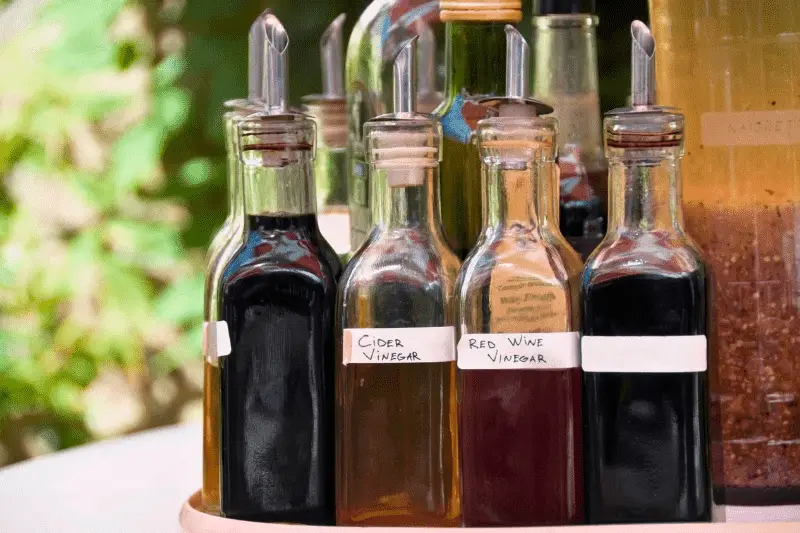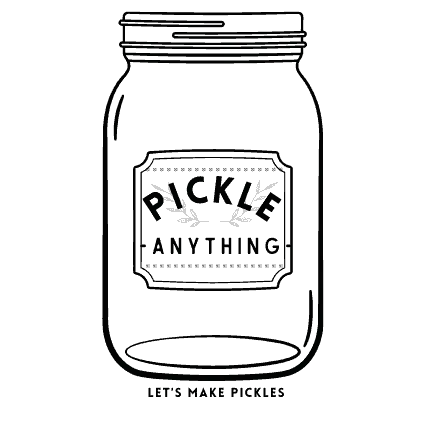Pickling is a food preservation method that has been around for centuries, and it involves immersing fruits or vegetables in a vinegar solution.
The vinegar solution’s acidity helps to prevent the growth of bacteria and mold, preserving the food’s freshness for extended periods.
Apart from preservation, pickling also adds a unique taste profile to foods, making them more enjoyable to eat.
One of the most critical factors that contribute to the final taste of pickles is the type of vinegar used. In this blog post, we will take an in-depth look at the best types of vinegar choices for homemade pickling.

White Distilled Vinegar: The Classic Pickler’s Choice
White distilled vinegar is one of the most popular vinegars used in pickling due to its clear colorless appearance and tart acidic flavor.
It is made by fermenting grain alcohol and diluting it with water to achieve an acetic acid concentration level of 4-7%.
One advantage of using white distilled vinegar is its mellow aroma and flavor that do not overpower other ingredients used in the pickle recipe.
However, using white distilled vinegar may have some disadvantages.
It may not be suitable for recipes requiring a sweeter taste profile as it has no sweetness compared to other types such as apple cider or balsamic vinegars. Additionally, some people find its acidic flavor too harsh for their liking.
Apple Cider Vinegar: The Sweet and Sour Option
Apple cider vinegar (ACV) is another popular option among picklers due to its slightly sweeter taste than white distilled vinegar.
It contains essential enzymes that are beneficial for digestion and nutrient absorption in humans when consumed raw without heating during cooking or preserving process.
Adding ACV into your pickle jar can help achieve a mild sweetness with sour notes depending on proportions added relative to other ingredients like sugar or salt content within a recipe.
However, ACV with sediment can be visually unpleasant since apples’ pulp is typically left in the vinegar during production, resulting in a cloudy appearance.
Other Vinegar Options for Pickling
Apart from the classic white distilled vinegar and apple cider vinegar, other vinegars can be used for pickling.
Rice, malt, and wine vinegars are all great options to consider.
Rice vinegar is commonly used in Asian cuisine and has a milder taste than most other types of vinegar due to its lower acidity level.
Malt vinegar is made from fermented malted barley or grain mash that imparts a unique flavor profile to pickled foods.
Red wine vinegar is made by fermenting red wine into acetic acid, imparting a mild fruity flavor to your pickles.
Balsamic vinegar can also be used; however, it may have too much sweetness for some recipes.
When choosing any of these alternative options for pickling, ensure they have at least 5% acidity as required to prevent bacteria or mold growth during fermentation.
Personal Taste Preferences
Since different types of vinegars have different flavor profiles, personal taste preferences can significantly affect the type of vinegar chosen for pickling.
Some people prefer the milder taste of rice or balsamic vinegars that allow other ingredients’ flavors to shine through more prominently in their pickles’ final product.
Others might enjoy ACV’s slight sweetness combined with sour notes that add complexity and depth to their recipe.
Budget Considerations
The cost of the type of vinegar used should also be considered when making homemade pickles.
White distilled vinegar tends to be more affordable than ACV or balsamic vinegars due to its simple production method and shorter maturation time compared with others such as red wine or balsamic varieties that require longer aging periods resulting in higher costs per unit volume.
Acetic Acid Concentration: The Key To Safe Pickles
Regardless of personal taste preferences or budget limitations when selecting which type of Vinegar best suited for your pickle recipe, it is essential to check the label and ensure that the vinegar has at least a 5% acetic acid concentration.
This is critical as the acidity level determines whether bacteria or mold growth will occur during the fermentation process, which can cause spoilage of your pickles resulting in an unpleasant taste or even illness.
Wwhite distilled vinegar and apple cider vinegar are among the best types of vinegar choices for homemade pickling.
Other vinegars like rice, malt, red wine, and balsamic vinegars can offer unique flavor profiles but should have at least 5% acetic acid concentration.
When selecting a type of vinegar for pickling, personal taste preferences, budget considerations, recipe requirements and checking label’s acetic acid concentration are all important factors to consider.
By keeping these factors in mind while experimenting with different types of vinegar in your homemade pickle recipes, you can achieve pickling perfection!
